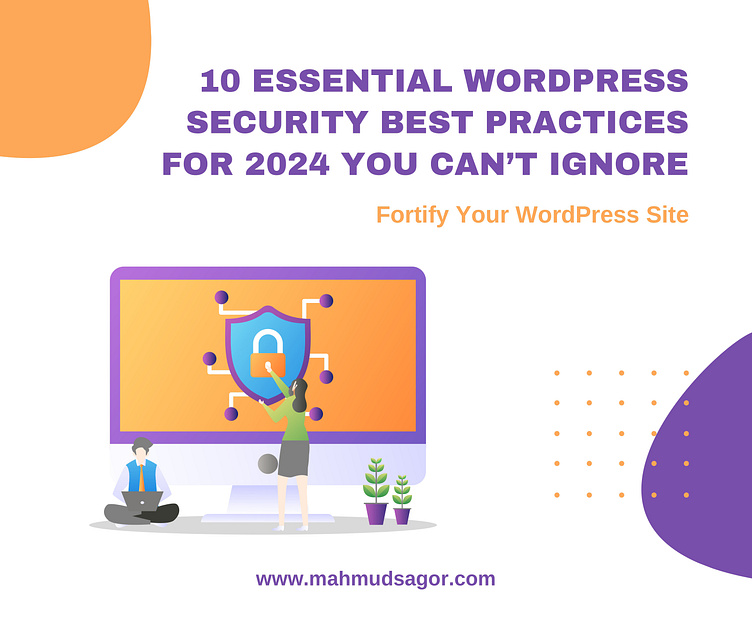10 Essential WordPress Security Best Practices You Can’t Ignore
In 2024, securing your WordPress site is more important than anything else. The number of cyber threats is on the rise, making it crucial to establish strong security measures. No matter the type – a blog, an online e-commerce store, or a corporate website – the following 10 security best practices are essential to getting ahead of the threats:
1. Keep Everything Updated: Outdated WordPress core, themes, and plugins are like sitting ducks to hackers. Run regular updates. It’s better if you enable automatic updating so your site stays protected without additional effort.
2. Use Strong and Unique Passwords: Weak passwords are like a Christmas present for hackers. Always have strong ones which include a mix of letters, numbers and symbols. You might want to consider a password manager for creating and keeping secure passwords.
3. Implement Two-Factor Authentication (2FA): Two-factor authentication provides an additional layer of security to your WordPress site, thereby making it nearly impossible for hackers or any kind of unauthorized users to access your account even if they steal a password.
4. Limit Login Attempts: Brute-force attacks can become a reality if the number of login attempts is not restricted. This can be combatted by restricting the number of failed attempts. The fewer possibilities of an attack – the better. In such a case, plugins like Login Lockdown might be quite useful.
5. Use of Security Plugins: Security plugins like Wordfence or Sucuri are tailored to provide an end-to-end solution. They’ll observe suspicious activities, block malicious traffic, and scan for malware.
6. Keep Regular Backups: This is an absolutely essential practice. Backup enables you to recover after you realize your site has finally been hacked. Use a top-notch backup plugin and deposit the data in multiple safe places.
7. Lock Down the Admin Area: The wp-admin area is a very juicy target for hackers. Change your login URL from the default /wp-admin to something that only you would know and limit access to the dashboard by IP address for safety.
8. Disable File Editing: WordPress comes with an in-dashboard file editing feature. This can be harmful in case hackers break in. Disable this functionality for added security.
9. Install an SSL Certificate: An SSL certificate will encode data between your site and your visitors, making it much harder for hackers to intercept information. Google also gives a little boost in SEO to those sites with an SSL installed.
10. Monitor User Activity: Finally, if there is more than one user, their activity also needs monitoring. Be on the lookout for any suspicious activity that might indicate a security breach. There are plugins like WP Security Audit Log that come in very handy in doing so.
Doing so, you will significantly reduce the odds of a cyber attack on your WordPress site. The moral of the story is to stay ahead, keep your site updated and protect it!
🌐 To learn more about me, explore my services, portfolio, contact information, hiring me or any assistance: https://bit.ly/mahmudsagor
🗓️ Schedule a complimentary consultation: https://bit.ly/mahmudsagor-calendly-free-30-min
🔍 Explore my blogs for regular insights on Web Development, Design, Digital Marketing, e-commerce, Graphic Design, and Technology:
· Website Blog: https://bit.ly/mahmudsagor-blog
· BlogSpot (Blogger.com) Blog: https://bit.ly/mahmudsagor-bs-wmsw
· Medium: https://bit.ly/mahmudsagor-medium
· Tumblr: https://bit.ly/mahmudsagor-tumblr
🔗 BrandYourself: https://bit.ly/mahmudsagor-brandyourself
